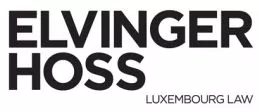- within Employment and HR topic(s)
- in Europe
- with readers working within the Banking & Credit industries
- within Employment and HR topic(s)
- in Europe
- in Europe
- in Europe
- within Antitrust/Competition Law, Technology and Law Practice Management topic(s)
- with readers working within the Banking & Credit industries
On 10 May 2023, the European Parliament and the Council adopted Directive (EU) 2023/970 on strengthening the application of the principle of equal pay for equal work or work of equal value between men and women through pay transparency and enforcement mechanisms (the "Pay Transparency Directive"). This marks a major development in EU employment law, aiming to close the persistent gender pay gap across Member States. The Directive introduces binding transparency obligations and enhanced enforcement tools.
The Directive introduces several key obligations for employers, including:
- Transparency during recruitment: Employers must indicate the salary range in job advertisements and are prohibited from inquiring about candidates' salary history.
- Employee rights during employment: Employees will be entitled to request information regarding their individual pay level and average pay levels for roles of similar value, broken down by gender.
- Pay gap reporting: Employers with at least 100 employees must report on gender pay gaps. Gaps of 5% or more must be objectively justified; otherwise, joint pay assessments with employee representatives must be conducted.
- Reversed burden of proof: In pay discrimination cases, the burden of proof will lie with the employer.
Where does Luxembourg stand?
As of today, Luxembourg has not published a draft law to transpose the Directive. EU Member States are required to implement the Directive into national law by 7 June 2026. However, given the scope of the obligations and potential reputational risks, employers are strongly encouraged to begin preparations well ahead of time.
Recommended next steps for employers:
In anticipation of the Pay Transparency Directive's implementation, employers in Luxembourg should consider the following preparatory steps:
- Conduct internal pay audits to identify categories of workers and potential gender pay gaps.
- Adapt HR and payroll systems to support gender-based pay analysis and reporting.
- Review and update recruitment, performance evaluation and compensation policies and procedures to ensure alignment with gender-neutral and transparent criteria.
- Train HR personnel and managers on pay transparency requirements and best practices.
- Establish internal procedures to handle employee pay information requests or to conduct joint pay assessments with staff representatives, if/where required.
Early compliance with the Pay Transparency Directive not only ensures legal readiness but also strengthens employers' ESG commitments and fosters greater trust and engagement among employees. A proactive approach will be key to navigating this upcoming legal transformation.
The content of this article is intended to provide a general guide to the subject matter. Specialist advice should be sought about your specific circumstances.


